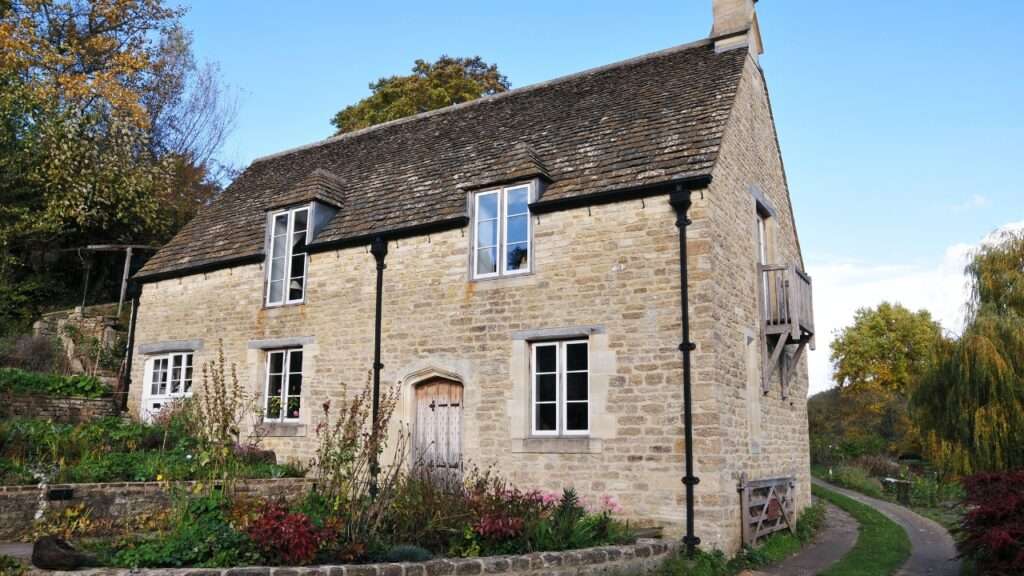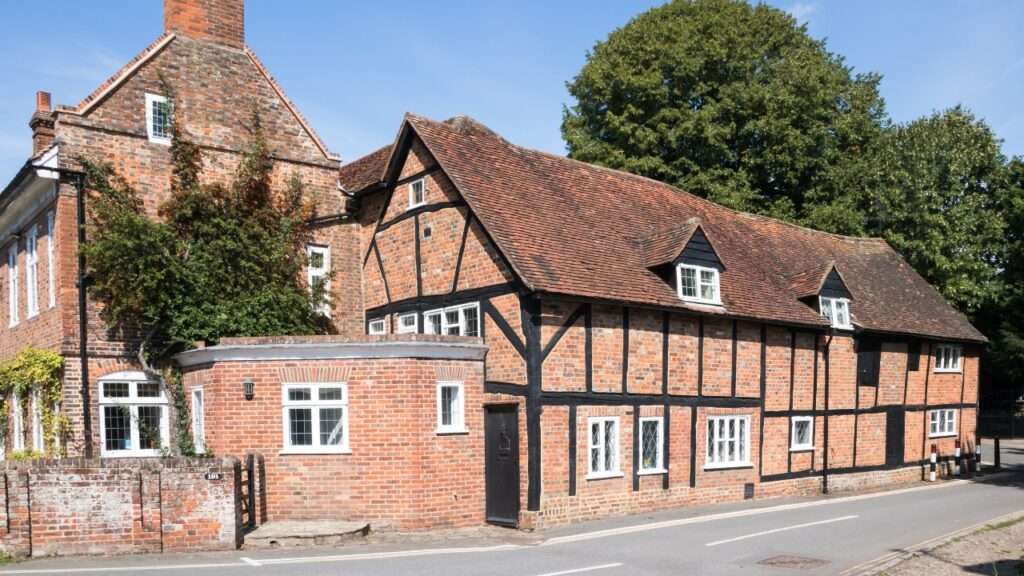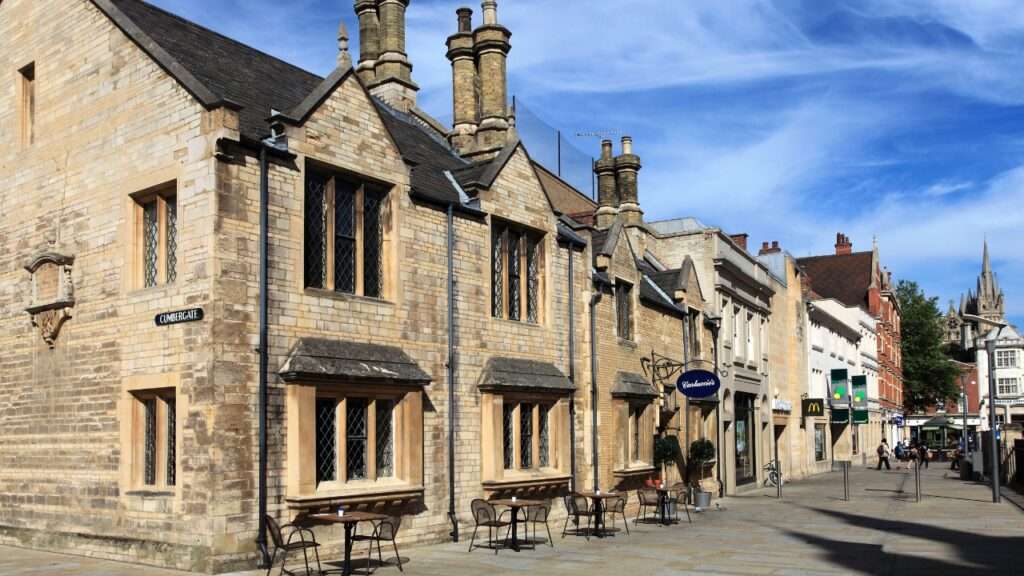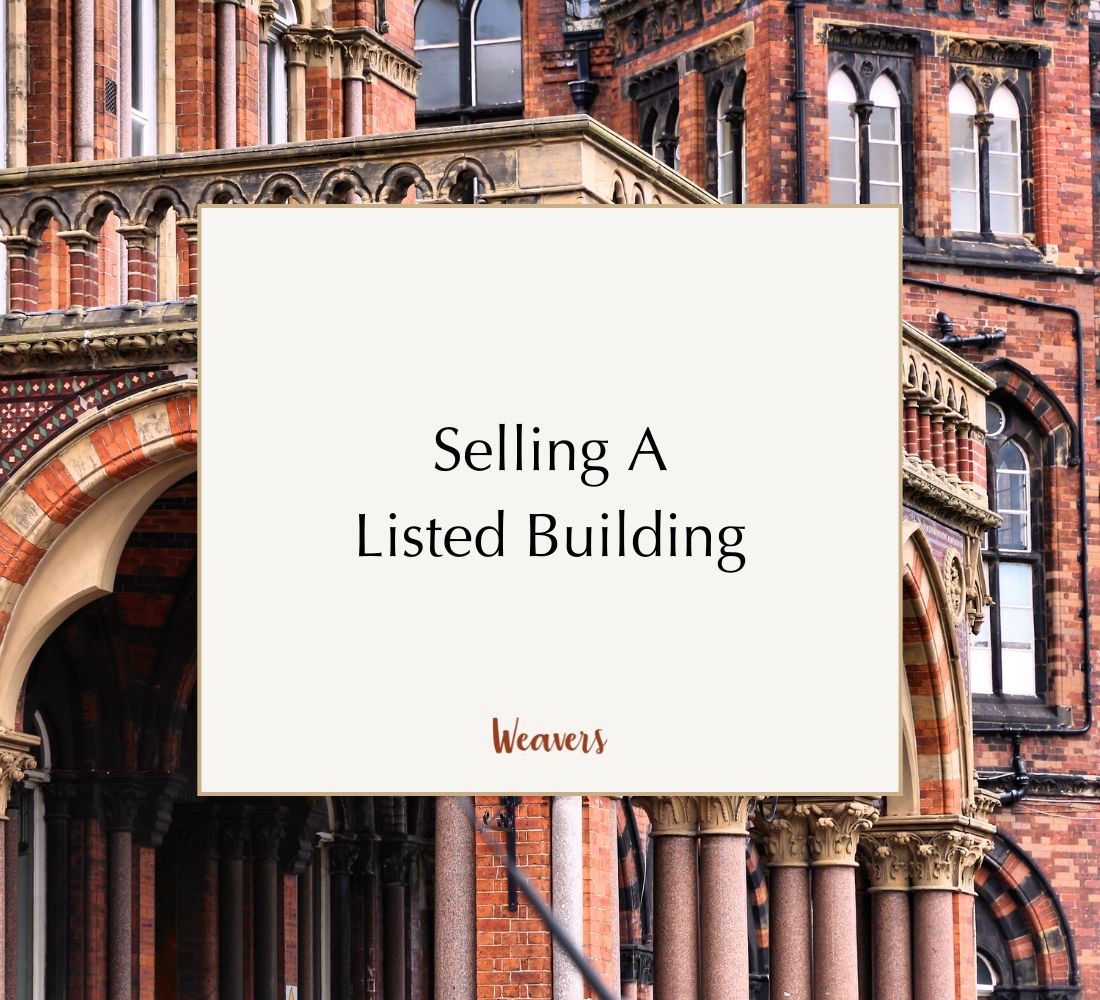Everything you need to know when selling a listed property
We love a listed property. they’re architecturally impressive and brimming with personality. If you own a historic property in the UK, the process of selling a listed building might be a daunting prospect. This guide will equip you with the essential knowledge needed to navigate the process with confidence.

What is a listed property?
In the heart of the UK’s rich cultural landscape, you’ll find listed properties – historical treasures preserved and protected under the Planning (Listed Buildings and Conservation Areas) Act 1990. But what exactly does it mean for a building to be ‘listed’?
Well, it’s essentially a badge of honour, a declaration that the property is of significant architectural or historical interest. These buildings are so cherished and valued that they’re protected by law, ensuring their unique stories and intrinsic beauty continue to echo through the ages.
Listed properties come in various grades that reflect their historical and architectural significance: Grade I, Grade II*, and Grade II. Each grade tells its own tale, with Grade I listed buildings being the rarest and most prestigious, encompassing only 2.5% of all listed properties. These are structures of exceptional interest, that have stood the test of time and have woven themselves into the very fabric of our history. Think towering medieval castles, magnificent stately homes, and awe-inspiring cathedrals.
On the other hand, Grade II* properties, while still particularly important, make up around 5.5% of listed buildings. The majority of listed properties, around 92%, are Grade II, deemed of special interest and warranting every effort to preserve them. Whether it’s a quaint 17th-century cottage, an elegant Georgian townhouse, or an enchanting Victorian schoolhouse, each Grade holds its own charm and historical value, making them all a prized piece of the UK’s cultural mosaic.
Listing ensures that the architectural and historic interest of the building is carefully considered before any alterations, both inside and out, are agreed upon, thus protecting its legacy for future generations to admire and learn from.
If you think your home is listed but are unsure, the best place to start is the Search the List page by Historic England.

How is a listed property different?
Unlike your typical modern dwellings, listed properties are one-of-a-kind treasures brimming with character and charm. From weathered wooden beams and centuries-old stone fireplaces to intricate plasterwork and leaded windows, every aspect of a listed building speaks of the era it hails from. As such, they provide a unique living experience, steeped in history and nostalgia. Owning a listed property isn’t just about having a roof over your head; it’s about becoming part of a story that started centuries ago.
However, the distinction doesn’t end at aesthetics and history. Listed properties are bound by legal protections that don’t apply to ordinary homes. These protections, aimed at preserving the property’s historical and architectural integrity, can affect everything from renovation projects to maintenance tasks. Whether you’re restoring an old fireplace, replacing windows, or even repainting the exterior, it’s likely you’ll need special permission to ensure that these alterations do not detract from the building’s historic character.
Another key difference lies in the selling process. Given their specialised nature, listed buildings may require expert valuations, niche marketing strategies, and potentially, more time to find the right buyer. This makes selling such properties slightly more complex than selling conventional homes.
This is why at Weavers, we engage professionals in their respective fields to create high-quality bespoke property marketing for each home.
Despite the challenges, listed buildings are highly sought after for their incomparable charm and enduring appeal. There’s a certain allure in their antiquity, a romance in their resilience, that sets them apart from the modern, uniform houses.
This very uniqueness often becomes the ultimate selling point, making listed properties an irresistible proposition for those seeking an extraordinary abode.

Are there differences between selling a Grade I & Grade II Listed Property?
Selling Grade I and Grade II listed properties each comes with its own set of nuances. As Grade I listed properties are considered of exceptional interest and form just a small fraction of the total listed buildings in the UK, they often hold significant historical or architectural importance. This rarity can make them highly coveted amongst buyers seeking the cream of the crop in heritage real estate. However, it’s worth noting that the elevated status can also mean more stringent restrictions on alterations and renovations, which might require additional patience and paperwork during the selling process.
In contrast, Grade II properties, whilst still of special interest, are more common, making up the majority of listed buildings. These properties may have fewer restrictions, but they still need careful management to uphold their historical value. Despite this, their charm and character can often inspire fervent interest amongst potential buyers seeking a slice of history with a more manageable level of responsibility.
Both types of properties demand respect for their history and require buyers who appreciate the privilege and responsibility of becoming custodians of such heritage. Therefore, it’s essential to present these properties highlighting their historical significance and unique features, whether it’s a Grade I’s distinguished status or the more accessible charm of a Grade II. In essence, regardless of the grade, the process of selling a listed property demands an appreciation of its inherent value and the careful communication of this to potential buyers.

What documents will I need when selling a Listed Home?
Preparing the right paperwork is crucial when selling a listed property. You’ll need a few key documents to facilitate the process and provide potential buyers with all necessary information about your property. One essential document is the Listing Description, which outlines the architectural and historical features that led to your property being listed. This document is available from Historic England’s online database and offers a wealth of knowledge about the building’s intrinsic value.
In addition, the Local Authority’s building control records will provide evidence of any major works that have been carried out on the property. Any alterations or renovations should ideally be accompanied by the relevant Listed Building Consent (LBC) forms. If you’ve made changes to the property without required consents, consider seeking retrospective permission to avoid any potential legal complications down the line.
Furthermore, any reports from previous surveys, or any documentation regarding structural issues or repairs, can provide clarity and reassurance to potential buyers about the state of the property. For Grade I or II* listed properties, you may also want to include any additional heritage reports or architectural analyses that have been conducted.
Lastly, you’ll want to prepare all standard property-selling documents such as Energy Performance Certificate (EPC), Property Information Form, and Fittings and Contents Form. Remember, transparency is key.
By providing these documents upfront, you’ll help potential buyers understand the responsibilities and rewards of owning such a significant slice of history.
If you do not have all this information to hand, fear not. Although it’s better to have all of the above information to hand, it isn’t legally necessary. Speak to your agent for advice on the best way to proceed.
Legal Requirements and Permissions for Selling Listed Buildings
Delving into the legal landscape surrounding listed properties can feel like wading through murky waters. But, fear not. We’re here to make it crystal clear.
The key to this journey? Listed Building Consent (LBC).
Think of this as your passport, granting you the necessary permissions to make any changes that might affect the building’s historic significance. However, this isn’t your everyday home improvement permit. With an LBC, every alteration, no matter how minor it may seem, needs to be given the official thumbs up.
This makes ensuring that your property is on the right side of the law all the more crucial. Unauthorised alterations can not only dampen your property’s appeal, but they could also spell out legal trouble, hindering your sale. If you’ve made modifications to your property without obtaining LBC, consider seeking retrospective consent before you put your property on the market.
Beyond modifications, there’s an added layer to consider when it comes to the legal side of things: surveys. Pre-sale surveys are like an open book examination of your property’s condition. While they’re not a legal requirement, conducting one can tip the scales in your favour, offering potential buyers an added sense of security.
So, as you prepare to hand over the keys to the next custodian of your historic gem, remember to cover all your legal bases. From permissions to surveys, these considerations will help you navigate the legal maze and ensure that your listed property’s legacy continues to shine, uninterrupted by legal hurdles.

Working with the right Estate Agent
Finding the perfect estate agent for your historic home isn’t about scrolling through directories or picking the first name on the list. It’s about choosing an ally, someone who recognises the value of your unique abode, who can weave the tapestry of your property’s history into an engaging narrative, and whose expertise in dealing with listed properties will navigate you smoothly through this journey. These agents possess an intimate understanding of the characterful quirks that make your property special and the ability to relay this appeal to prospective buyers who hold an appreciation for historic dwellings.
They are familiar with the legal terrain of listed buildings, ensuring you avoid any potential pitfalls. With their experience, they can expertly guide you through the nuances of Listed Building Consent, the importance of correct documentation, and how best to deal with any unauthorised alterations.
More importantly, they’ve honed their skills in the specialist market of listed properties. They have a ready network of potential buyers who cherish the charm of historic homes and have developed effective strategies to reach out to this select audience. They understand that your property is not just a house, but a slice of history and treat it with the respect and care it deserves.
So, don’t settle for an agent. Choose a partner. A partner who’ll help you pass on your stewardship to the next worthy custodian, ensuring your property continues to stand as a testament to our rich cultural heritage. After all, selling your listed property isn’t just a transaction, but a historical handover, the beginning of a new chapter in your property’s enduring tale.
Follow this link to read about how to choose the best estate agent.

Setting the right price for your property
Assigning an appropriate price tag to your listed building can seem like solving a jigsaw puzzle.
Each property is unique, steeped in history and dripping with character, making the process slightly more intricate than pricing an ordinary house.
Calling upon the expertise of a specialist valuer can be immensely helpful. These professionals have their fingers on the pulse of the market for historic properties. They will assess your property in its entirety, taking note of all its architectural quirks and historic elements.
However, they don’t just stop at the aesthetics. The valuer also considers practical aspects like the cost of any upcoming maintenance and the level of restrictions on alterations. After all, these factors can significantly impact the future plans and budgets of potential buyers. Moreover, the demand for listed properties in your local market and wider region also plays a vital role in determining the price. Each of these components will be carefully weighed to arrive at a valuation that does justice to your property’s worthwhile ensuring it aligns with market expectations.
Click here to read our post on how to value a unique home.
Remember, setting the right price is key. It could be the defining factor that attracts the right buyer, someone who truly appreciates the architectural beauty, historical significance and the responsibility that comes with owning your listed property. The right price can transform your listed building from just another property on the market to the dream home for that discerning buyer. So, engage with a specialist, understand the nuances, and confidently set a price that beautifully reflects your property’s legacy and future potential.

Effective Marketing Strategies for Listed Buildings
Assigning an appropriate price tag to your listed building can seem like solving a jigsaw puzzle. Each property is unique, steeped in history and dripping with character, making the process slightly more intricate than pricing an ordinary house. Calling upon the expertise of a specialist valuer can be immensely helpful.
These professionals have their fingers on the pulse of the market for historic properties – see our post regarding specialist estate agents for unique homes.
They will assess your property in its entirety, taking note of all its architectural quirks and historic elements. However, they don’t just stop at the aesthetics. The valuer also considers practical aspects like the cost of any upcoming maintenance and the level of restrictions on alterations. After all, these factors can significantly impact the future plans and budgets of potential buyers.
Moreover, the demand for listed properties in your local market and wider region also plays a vital role in determining the price. Each of these components will be carefully weighed to arrive at a valuation that does justice to your property’s worthwhile ensuring it aligns with market expectations. Remember, setting the right price is key. It could be the defining factor that attracts the right buyer, someone who truly appreciates the architectural beauty, historical significance and the responsibility that comes with owning your listed property. The right price can transform your listed building from just another property on the market to the dream home for that discerning buyer. So, engage with a specialist, understand the nuances, and confidently set a price that beautifully reflects your property’s legacy and future potential.
If you own a listed property and are considering your options, we’d love to make your journey a little easier.
Contact the team today via telephone on 01702 411146, or you can reach us via email at team@weaversestates.co.uk.
We’re looking forward to speaking with you.












